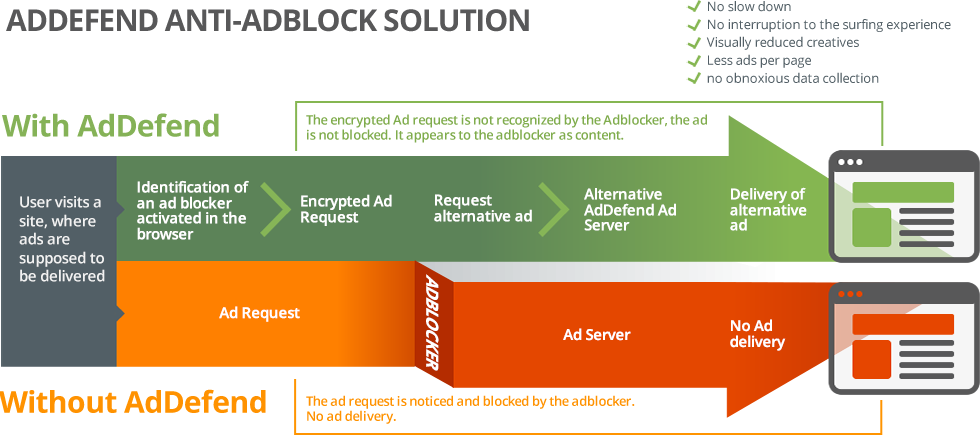AdDefend: unlock advertising
Adblockers are widely used nowadays. More than 20% of internet users have installed adblocking software. The financial damage resulting from this is enormous. However, the reasons for the installation rarely lie in the categorical rejection of advertising. Rather, the negative influence in the user experience caused by permanent interruptions, the annoyance of obtrusive formats, dubious advertisements and advertising overloaded websites, as well as the associated load delay form the motives for the installation of an adblocker. Data protection concerns are another crucial factor.
The list of reasons already reveals: websites, which are subject to a certain qualitative care and corresponding standards in terms of advertising rarely give users the motive to install an adblocker. However, these Internet sites are also affected by the consequences of increasing dissemination, since all, not only disturbing advertisements are blocked by the corresponding software, regardless of their quality. As a result, adblockers continue to deprive publishers of the basis for maintaining their business model that is providing free, yet high quality content. Advertisers are no longer able to reach a sizable proportion of online users due to the use of adblockers.
The currency of digital advertising: attention
In the debate about adblockers and their pros and cons it is often neglected that monetization through advertising is the necessary basis to let users pay with their attention for the content they consume – rather than with a cash coin, as it is the case with pay walls for example. In addition, this is a given principle learned from other media such as TV and print, which must be transferred in the long term to the gratis culture of the internet if users’ access to diversified, high quality media should remain free.
Advantages of the AdDefend reach
AdDefend provides a technology to effectively tackle the problem of the increasingly prevalent adblocker use in order to dissolve it satisfactorily for everyone involved:
Publishers and marketers can easily and efficiently reactivate the blocked reach to increase their net profit by an average of one fifth with a guaranteed 100 percent fill rate. They regain control over their inventory, so they can in turn invest the revenue generated in the production of high quality content. In addition, they are not at risk of scaring users off permanently, as it is the case with alternative monetization models such as pay walls.
Advertisers are increasing their net reach immensely and reach the attractive new target group of adblocker users who would otherwise never see their advertising. These users are altogether much less exposed to advertisements; accordingly, they are neither overfrequented nor banner blind.
At the same time, the users‘ wishes for reduced advertising are equally respected: on the one hand, they receive significantly less ads on the AdDefend reach, on the other hand they only get to see unobtrusive formats. In return for their attention, the content of the websites remains free of charge in the long term. The user’s privacy is protected and the surfing experience is not reduced by loading slow downs, since the creatives used only have small file sizes.
AdDefend reaches more than 10 million unique users. Branding as well as performance campaigns provide demonstrably convincing results that can keep up with the performance values of the unblocked reach. This also proves that the majority of adblocker users it not against advertising, per se. If ad impressions are subject to certain restrictions in terms of form and frequency, they are not primarily perceived as disruptive and are accepted – with the result that adblock users also click, buy and convert into leads.













